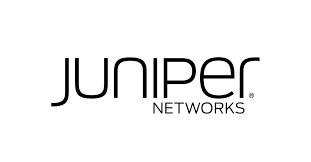Juniper CEO on AI-native vision: “No application downtime or performance issues”
As HPE works to expand its networking business through the acquisition of Juniper Networks–a deal widely regarded as all about bringing artificial intelligence (AI) to bear “from edge to cloud to exascale” as HPE put it—Juniper has made major upgrades to its networking platform. In fact, Juniper is calling its latest the AI-Native Networking Platform and touting the ability for “end to end…AIOps to be used for deep insight, automated troubleshooting and seamless end-to-end network assurance.”
Juniper CEO Rami Rahim said in a statement, “AI is the biggest technology inflection point since the internet itself, and its ongoing impact on networking cannot be understated.” To that end, Juniper has focused on bringing the practice of AIOps from the world of enterprise IT to networking in an effort to save users “significant time and money…By extending AIops from the end user all the way to the application, and across every network domain in between, we are taking a big step toward making network outages, trouble tickets and application downtime things of the past,” Rahim said.
This product announcement fits to analysts’ reactions to the impending combination of Juniper and HPE. RCR Wireless News published a round up of commentary on the acquisition. For a good overview, we turn to Moor Insights & Strategy CEO Patrick Moorhead that recalls Juniper’s 2019 acquisitions of Mist Systems, an AI-driven wireless local area network specialist.
He called the acquisition of Mist “a smart move. Mist’s value…is firmly rooted in AI…By all measures, the Mist acquisition has been a success, with Juniper growing its enterprise base faster than its service provider business over the last 12- to 18-months.” He added: “HPE is likely seeking a strong AI anchor for its portfolio of hardware, software, and IT consumption services… AI is hot… [and] one could argue that beyond the AIOps capability found in the HPE Aruba portfolio today, HPE needs further AI depth to remain competitive and continue to grow its top-line revenue and profitability. Juniper could deliver on that front.”
The newly announced AI-Native Networking Platform includes two upgrades to the Marvis AI-based Virtual Network Assistant (VNA), specifically proactive recommendations and “self-driving operations” with a generative AI (genAI) voice-based user interface for some use cases. In practice this would look like a “networking digital experience twin” that “simulates user connections to instantly validate network configurations and find/detect problems without users being present.” The genAI interface “allows IT teams to pose direct queries and get simple, seamless insight into the data center product documentation and knowledgebase.”
Juniper is also expanding its AI Data Center product to support multi-vendor data center fabric management, automation and assurance.” Upgrades focus on faster processing of AI and machine learning traffic, updated routers and line cards and a new switch that doubles capacity.
This emerging concept of AI-native, particularly as it relates to network operators, is an extension and expansion of the push to cloud-native, something that itself is currently an aspirational state rather than a reality. As McKinsey & Company Senior Partner Tomas Lajous explained in an interview, being cloud-native is a requirement to becoming AI-native.
For his part, Rahim penned a blog post on AI-native saying it’s not “just a fancy phrase, framework or ‘market-tecture.’ This is a platform that drives experience-first networking better than any other solution on the market because real, proven AI was built into the original product architecture.” Being AI-native, he wrote, is about “having the right data,” then using the right data to action “the right real-time response.” And, “none of this is possible without the right secure infrastructure,” according to Rahim.
When an AI-native tech stack is combined with AIOps, Rahim laid out a vision: “No application downtime or performance issues. No network outages. No one even knows that there is a network operating behind the scenes. There isn’t a single human touching the controls of the infrastructure. In fact, there are not controls or [user interface] at all. There’s no need because everything just work, and it works well. Across every single domain. This is a vision we set out to achieve years ago and we’ve made real progress over the last several years. And now, we have all of the pieces in place with our AI-Native Networking Platform to bring it all together and fully realize this vision.”

